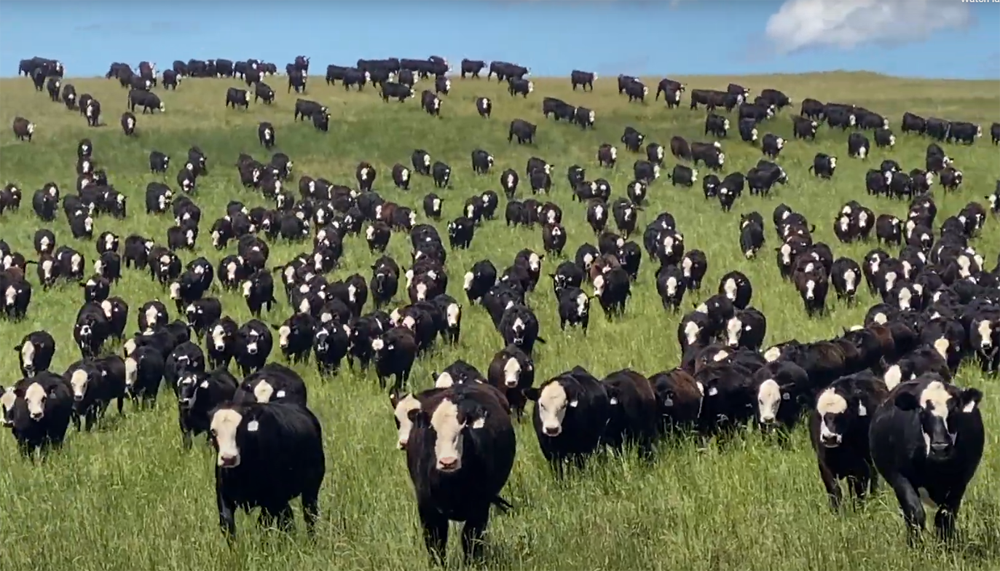The 2024 beef production forecast is adjusted slightly higher, on reported slaughter data through early September. The latest slaughter data point to heavier-than-previously-expected carcass weights and slight adjustments to the cattle slaughter mix. The 2025 beef production forecast is marginally raised, with a shift of marketings into early 2025, raised placements, and heavier anticipated carcass weights. Reductions to cattle price projections from last month’s forecast reflect changes in recent price data. The beef trade forecasts for second-half 2024 are raised for both imports and exports. For 2025, beef imports are raised in the second half of the year, showing a nearly flat change on an annual basis. Beef exports are raised in all quarters, on improved outlook for demand but remain 13 percent lower year over year.
Production Forecasts Are Adjusted Up on Slightly Higher Slaughter and Heavier Weights
The latest Cattle on Feed report, published by USDA, National Agricultural Statistics Service (NASS), estimated the August 1 feedlot inventory at 11.095 million head, less than 1 percent above 11.064 million head in the same month last year. Feedlot net placements in July were nearly 7 percent higher year over year at 1.646 million head.
Marketings in July tallied 1.855 million head, up nearly 8 percent year over year. On a per day basis, however, marketings were about 2 percent lower due to the 2 additional slaughter days in July 2024. The year-over-year increase in marketings was largely expected with a large share of cattle on feed over 150 days. For example, two of the largest cattle feeding States—Kansas and Texas— held 12 and 32 percent, respectively, of their share of cattle on feed over 150 days on August 1. As a result, these feedlots had more market-ready cattle available than at the same time last year. Nebraska, the State with the second largest number of cattle on feed, has about 5 percent of its cattle on feed over 150 days, but it is lower than last year. Nonetheless, market conditions are encouraging feedlots to add weight to carcasses allowing packers to offset fewer cattle supplies.
Reflecting on the anticipated pace of cattle slaughter in 2024, the beef production outlook for 2024 is fractionally higher than last month at 26.795 billion pounds. Third-quarter beef production is increased as recent slaughter data point to fewer bulls in the slaughter mix, which is more than offset by higher anticipated cow slaughter and average carcass weights.
In the fourth quarter, production is fractionally raised 40 million pounds from last month, based on minor adjustments upward to anticipated steers and cows in the slaughter mix, as well as heavier expected carcass weights. These adjustments more than offset lower anticipated bull slaughter. For 2025, the beef production forecast is also raised 180 million pounds from last month to 25.625 billion pounds. Production is raised on higher expected fed2 cattle slaughter and heavier expected carcass weights. The relatively large number of placements in July raises expectations for overall placements in third-quarter 2024. As a result, anticipated marketings in first-quarter 2025 are raised to reflect an increase in expected placements. Further, steers and heifers are spending more time on feed than a year ago in two of the three largest cattle feeding States. This trend of feeding cattle to heavier weights appears unlikely to change soon, resulting in a relatively slow pace of marketings.
Cattle Prices Are Forecast Lower
The August average price for slaughter steers in the 5-area marketing region was $189.39 per cwt, about $5 lower from July but $5 above August last year. Accounting for recent price declines since early July, softening beef sales for delivery 22—60 days, and the large proportion of cattle on feed ready to be marketed—the third-quarter price forecast for slaughter steers is reduced $5 to $188.00 per cwt and the fourth quarter is lowered $7 to $183.00 per cwt. That price weakness was carried into 2025, and the forecast of the annual prices is lowered $4.50 to $186.25 per cwt. In August, the weighted-average price for feeder steers weighing 750–800 pounds at the Oklahoma City National Stockyards was $247.28 per hundredweight (cwt). This price was a decline of $15.78 from July and the first year-over-year decline since February 2021. In the sale on September 9th, feeder steers continued a 9-week decline to $240.27 per cwt since peaking at $268.73 on July 1st. Accounting for recent price weakness, the third-quarter price forecast for feeder steers is reduced $9 to $252.00 per cwt and the fourth quarter is lowered $13 to $255.00 per cwt. This price weakness is carried into 2025, and the forecast of the annual price is lowered $3.25 to $258.75 per cwt.














